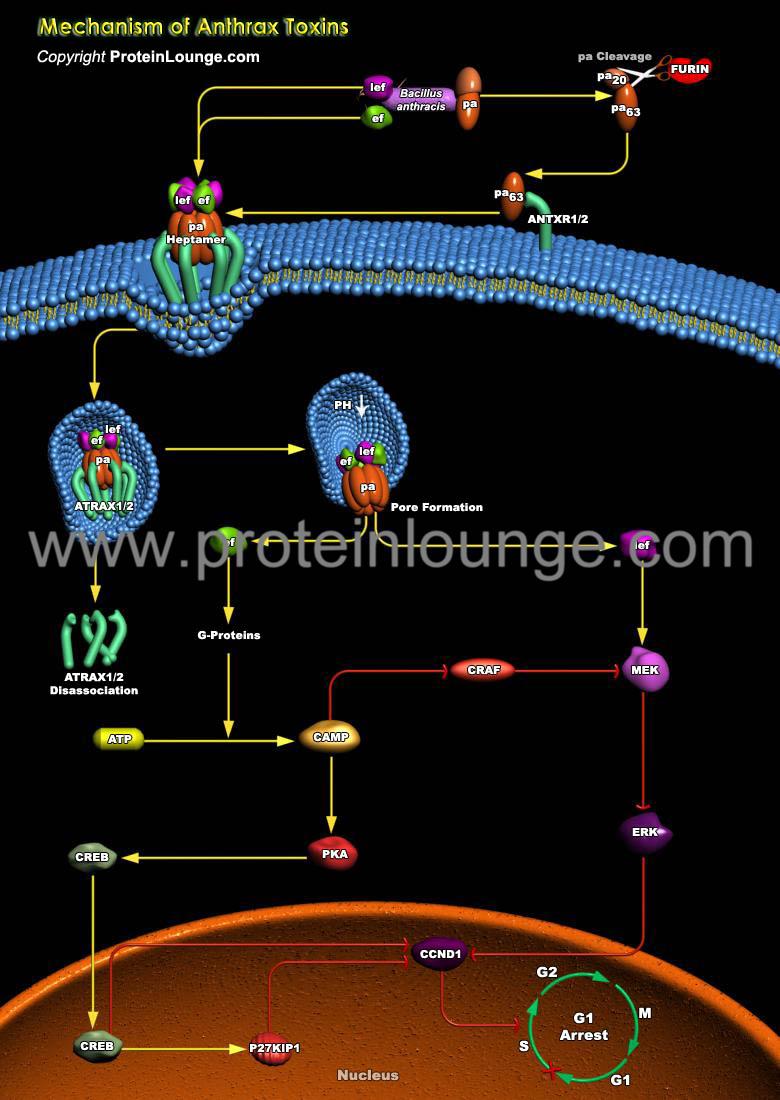Pathways
Mechanism of Anthrax Toxins

Description:
Anthrax is a severe, although rather rare, infectious disease that is caused by the Gram-positive, spore-forming bacterium Bacillus anthracis. The infectious form is the spore and the major virulence factors of the bacterium are its poly-Gamma-D-glutamic acid capsule and the tripartite anthrax toxin. The discovery of the anthrax toxin receptors in the early 2000s has allowed in-depth studies on the mechanisms of anthrax toxin cellular entry and translocation from the endocytic compartment to the cytoplasm. There are three f...
References:
-
The Ins and Outs of Anthrax Toxin.
Toxins (Basel). 2016 Mar 10;8(3). pii: E69. doi: 10.3390/toxins8030069. Review. -
Anthrax lethal and edema toxins in anthrax pathogenesis.
Trends Microbiol. 2014 Jun;22(6):317-25. doi: 10.1016/j.tim.2014.02.012. Epub 2014 Mar 27. Review. -
Tumor Targeting and Drug Delivery by Anthrax Toxin.
Toxins (Basel). 2016 Jul 1;8(7). pii: E197. doi: 10.3390/toxins8070197. Review. -
Heterogeneous Family of Cyclomodulins: Smart Weapons That Allow Bacteria to Hijack the Eukaryotic Cell Cycle and Promote Infections.
Front Cell Infect Microbiol. 2017 May 23;7:208. doi: 10.3389/fcimb.2017.00208. eCollection 2017. Review. Erratum in: Front Cell Infect Microbiol. 2017 Aug 14;7:364.
You can view details of this pathway by subscribing:
Copyright © Protein Lounge Inc.
Terms & Conditions

